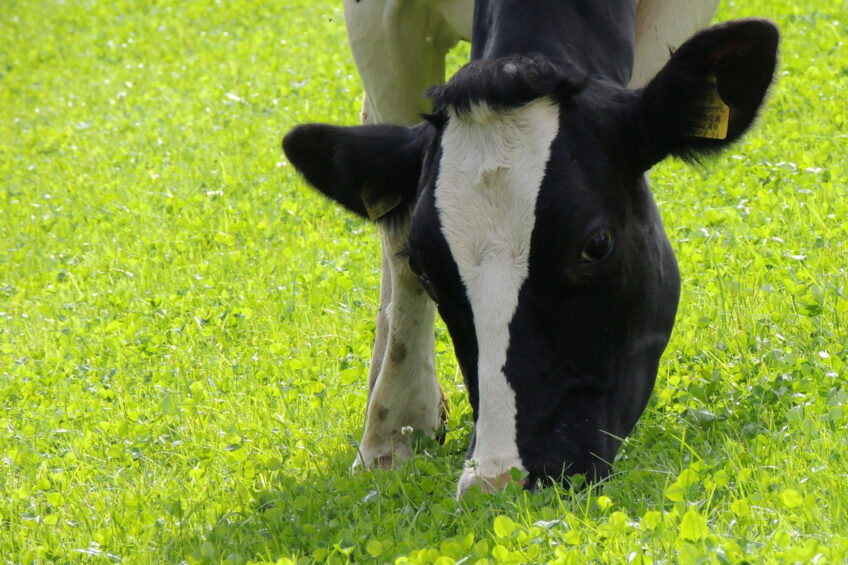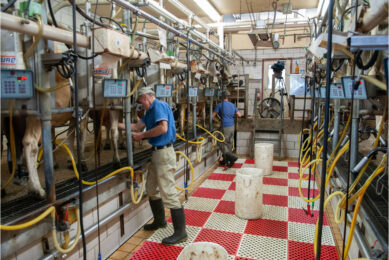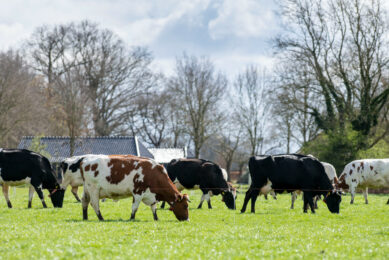What genomic testing means for the UK’s dairy herd

The genomic testing of dairy heifers is having a profound effect on the genetic merit of the national dairy herd, with the gulf between the best and worst herds noticeably increasing.
This pattern has been revealed by the latest analysis from the Agriculture and Horticulture Development Board (AHDB), which has identified a £193 difference in the average Profitable Lifetime Index (£PLI) between the most and least-engaged herds.
Producers using genotyping services for 75-100% of their dairy heifers had an average PLI across their 2023 calf crop of £430. This compares with a £237 PLI for those herds which test 0-25% of their heifer calves.
Improving genetics
Marco Winters, head of animal genetics for AHDB, says this represents a massive difference in profit potential between the best and worst herds: “Improving genetics is probably the cheapest and most sustainable way of making long-term improvements to any herd, and when you’re using a genetic index which has been developed specifically to increase profitability, this feeds straight through to a farm’s bottom line.”
The theoretical value of this difference is said to be around £19,300 for a typical 175-head herd. However, analysis of actual margins from farm business accounts has revealed the advantage of a genetic difference of this magnitude to be over £50,000.
Genomic tests
The AHDB said there had also been a steep rise in the number of genomic tests of females with around 100,000 dairy heifer calves tested, representing approximately 20% of the recorded herd. This is set to rise to 35% by the end of the year and there have been rises in both black and white (Holstein Friesian), Channel Island (Jersey, Guernsey) and Ayrshire breeds.
“All of this tells us that genomic testing of females is no longer considered to be for the elite, as it may have been in the early days of the technology,” says Winters.
The analysis has also revealed that many animals have been misidentified, with some being assigned the wrong sire or dam. In fact, around 17% of calves have their sires updated when the genotypes are analysed. This is either because the wrong sire was recorded (7% of cases), or the sire was not recorded at all (10%). Dam misidentification runs at a lower proportion but is still an issue.
“This means that if farmers think they are breeding from their best heifers, this may not be the case,” he says. “This has implications, not just for the quality of their replacements but also for inbreeding, through their choice of subsequent matings,” he added.
Genomic testing and UK producers
Genomic testing of females was actually introduced to UK producers in 2012, and it is interesting to plot progress in the run-up to this date. For FI in particular, this shows the worst herds today – which are not engaged in genomic testing – were actually the best back in 2005.
“We can’t explain this pattern with complete confidence, but it makes sense that progressive producers who are genetically engaged have moved their breeding focus from almost exclusively milk production 20 years ago, towards the health, management and fertility traits today,” he said. “Conversely, those who aren’t so engaged in their herds’ genetics, may have had lower production – itself related to better fertility – 20 years ago.”
Similar benefits are seen in the top quartile when fat percentage is tracked, although all 4 groups have made steady genetic progress.
“It’s clear that virtually every producer is focused on this trait for obvious commercial reasons, but again, those with more information are doing the best job,” he added.
· Farmers can benchmark their herd’s £PLI using the AHDB’s Herd Genetic Report, which is available for all producers who are fully milk recording.
Join 13,000+ subscribers
Subscribe to our newsletter to stay updated about all the need-to-know content in the dairy sector, two times a week.










